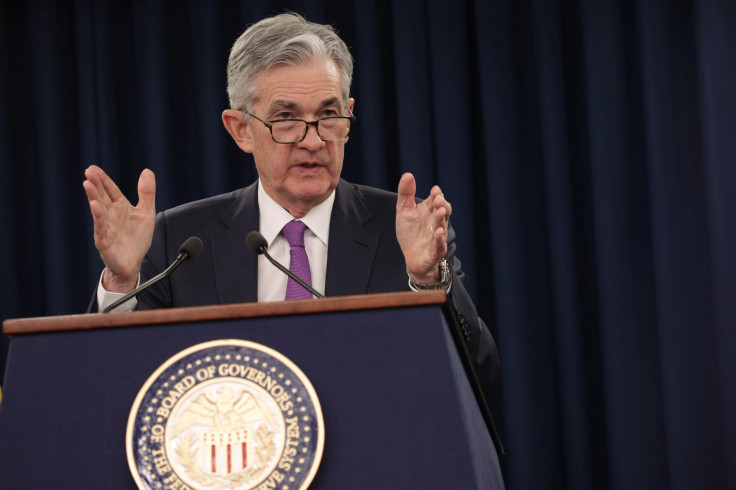Is the Federal Reserve Aiming for a Recession?: Mike Cosgrove

The Federal Reserve kept its foot on the quantitative easing accelerator for too long. And then the Fed compounded that mistake by doubling down on monetary policy tightening. The Fed simultaneously increased interest rates and implemented quantitative tightening (QT) and remains on a path to invert the yield curve to perhaps push the U.S. economy into a 2020 recession.
QT started in fourth quarter 2017 by pulling out $10 billion per month of liquidity, and then the Fed revved that up to $50 billion per month one year later. Instead of going slow with interest rate increases to determine the effects of QT, the Fed accelerated interest rate hikes to four during 2018 from three increases in 2017.
Why did the Fed do this? The biggest increase in the Fed’s inflation measure -- the personal consumption deflator -- on a year-on-year quarterly basis was 2.2 percent during 2018. Two percent is the Fed’s inflation target.
Clearly, inflation pressures were not enough to justify both four hikes in the federal funds rate during 2018 and the rapid acceleration in withdrawing liquidity. That combination of monetary policy tightening is a recession recipe.
We know that from what the yield curve is telling us. The spread between the 10-2 Treasury yield curve is less than 20 basis points. The average yield curve spread has been approximately 150 basis points in the current economic expansion.
At the start of QT, the spread remained at 80 basis points. The combination of QT during 2018 and 4 rate hikes narrowed that spread to what it is now. Monetary policy has the yield curve on a path to invert.
To prevent a yield curve inversion, the Federal Reserve needs to either lower the funds rate and / or stop QT. The actions taken in 2018 imply that the Fed wants its monetary policy to invert the yield curve, however no Fed official has indicated so.
An inversion in 2019 would likely indicate a 2020 recession. According to a recent Blue Chip Economic consensus, economists put the probability of a U.S. recession at near 40 percent in 2020. The highest ten forecasters see that probability at 60 percent, while the bottom ten see only a slightly over 20 percent chance of a recession in 2020.
If the Fed were to invert the yield curve this year, the probabilities of a 2020 recession would jump. A yield curve inversion this year by the Fed would very likely result in a recession in an election year. Is that what Fed officials want?
Ten-year inflation expectations remain slightly under 2 percent, while the 5-year expected inflation rate is approximately 1.75 percent. Current inflation measures are also tame. Inflation pressures confronting the Fed do not suggest that the Fed officials should be on a path to invert the yield curve.
But here we are with a yield curve spread of under 20 basis points compared with an 80 basis points spread at the start of QT. While the Fed officials can say what they want, clearly their policy agenda puts the yield curve on a path to inversion. This is occurring when inflation expectations are less than 2 percent.
In July 2018, the yield curve spread hit 30 basis points. The Fed could see the effects of their monetary policy had already shaved 50 basis points off the yield curve spread compared to spreads seen in October 2017. Fed officials knew in July 2018 what a combination of QT and interest rate hikes had already done to the yield curve.
Did the Fed stop at that point? No -- Fed officials forged ahead and jacked up the federal funds rate on Sept. 27 and again on Dec. 20 last year, and increased QT from $30 billion per month in the second quarter to $50 billion per month in the fourth quarter 2018.
The only rationale that fits the 2018 aggressive tightening of monetary policy is that the Fed wants to invert the yield curve, grind down bank lending and likely create a 2020 recession.
Mike Cosgrove, principal at Econoclast, a Dallas-based capital markets firm, is a professor at the University of Dallas.
© Copyright IBTimes 2025. All rights reserved.





















